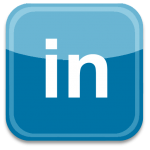 You work long and hard crafting “feel good” ad campaigns with positive messages. However, a little negativity can be a good thing when used judiciously. Below are five ways to channel your inner grumpiness when marketing your business.
You work long and hard crafting “feel good” ad campaigns with positive messages. However, a little negativity can be a good thing when used judiciously. Below are five ways to channel your inner grumpiness when marketing your business.
1. Identify the customers you DON’T want. While you likely focus on attracting the right type of customers, it is equally important to know which customers you do not want. In some cases it’s a simple matter of a mismatch between needs – or lack thereof – and your solutions. In others, certain personas may be too costly to acquire or prone to high churn rates. Some audience segments may be unprofitable. Whatever the reason, it’s important to be aware of the types of customers you do not want so that you can avoid inadvertently marketing to them.
2. Be controversial. Nothing gets people buzzing like a little controversy. However, you’ll need to be prepared to manage the conversation – and the emotions that are sure to arise. Controversy doesn’t need to be of a serious nature such as politics or religion; it can be much lighter such as “Coke vs. Pepsi.” Before you begin, consider what position, if any, you will take. It’s fine not to take a side and serve as the moderator of any discussion that occurs. Obviously, if you work for Coca-Cola, your position would be that Coke is better than Pepsi. Similarly, if you work for Pepsi your position would be that Pepsi is better than Coke. However, what if you’re a distributor who sells both products to restaurants? You might opt to stay neutral and let your customers share their likes and dislikes about the two products. Choose a topic related to your brand that people are passionate about. When handled correctly, this negative marketing tactic can generate buzz and traffic.
3. Create a shared negative experience. People tend to dislike many of the same things: sitting in traffic, endless office meetings with no purpose, obnoxious people talking loudly on cell phones in confined environments, being treated rudely, and so on. Sharing a negative experience that your audience can relate to can build rapport and engagement. Be careful to transition back to a positive solution and avoid a full blown rant.
4. Explain why something sucks. This can quickly establish yourself as an authority on a topic, especially if you can effectively make your case. Detailing why something sucks also provides you with the opportunity to position your product or service as an alternative. For example, if you sell beauty products with all natural ingredients, you could write about beauty products that suck because they contain chemicals, are tested on animals, use environmentally damaging manufacturing processes, and so on. From there, you could frame your products as alternatives that do not suck.
5. Use negative titles occasionally. Lists are popular with bloggers and readers alike. For example, a blog post titled “Top 10 Gadgets for Busy Moms” would likely get a lot of clicks. The same is true of a blog post titled “Don’t Waste Your Money on these Ridiculous Gadgets.” This is similar to negative marketing tactic #4 in that you’ll likely go on to detail why those gadgets suck.
A little negative marketing can have a positive impact on your overall marketing strategy. Use negative marketing to identify who you don’t want to attract, stir up passions, bond with your audience, position yourself as an authority, and boost traffic. When used with care and in small doses, negative marketing can be extremely effective.














